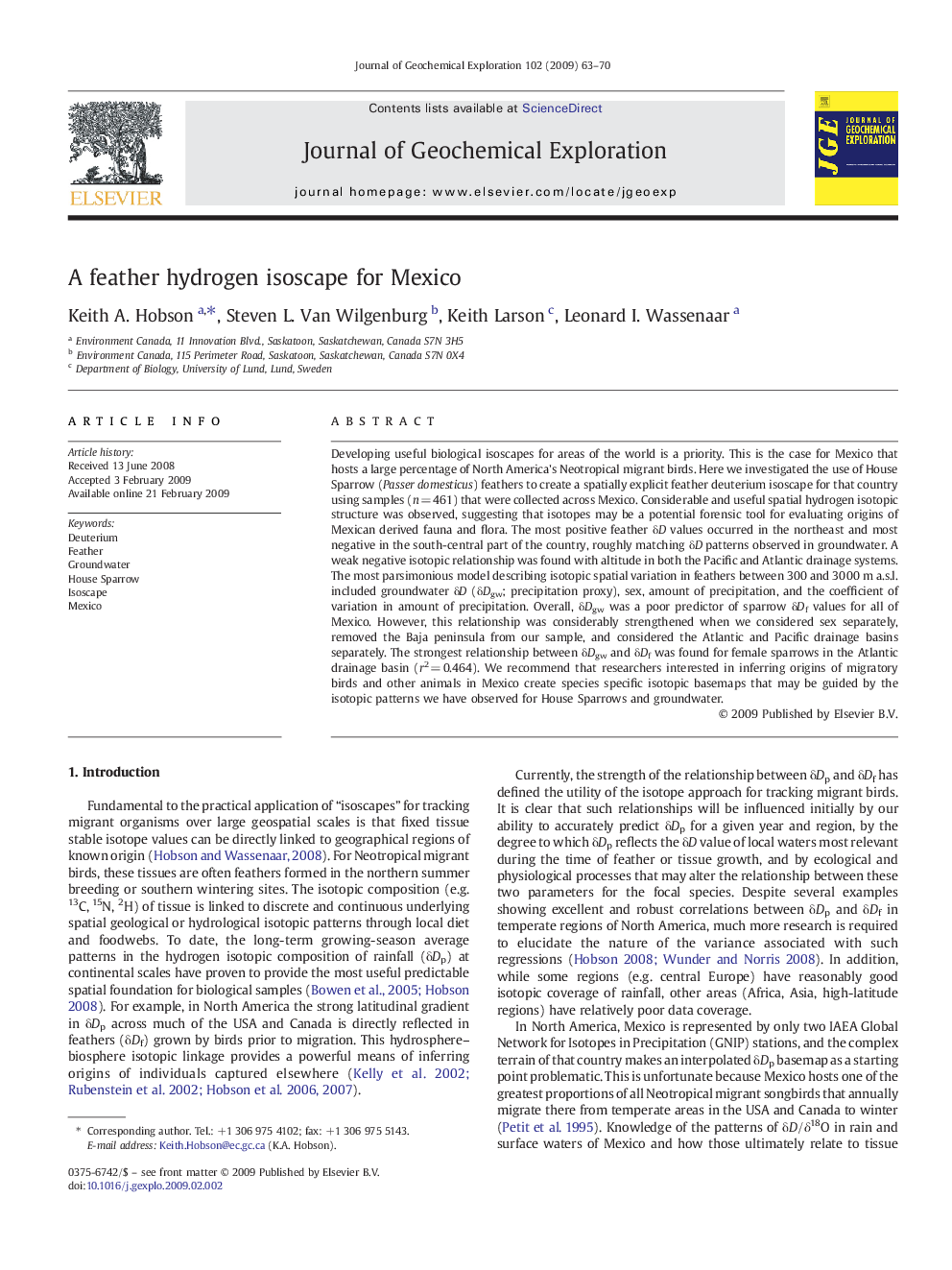| Article ID | Journal | Published Year | Pages | File Type |
|---|---|---|---|---|
| 4458078 | Journal of Geochemical Exploration | 2009 | 8 Pages |
Developing useful biological isoscapes for areas of the world is a priority. This is the case for Mexico that hosts a large percentage of North America's Neotropical migrant birds. Here we investigated the use of House Sparrow (Passer domesticus) feathers to create a spatially explicit feather deuterium isoscape for that country using samples (n = 461) that were collected across Mexico. Considerable and useful spatial hydrogen isotopic structure was observed, suggesting that isotopes may be a potential forensic tool for evaluating origins of Mexican derived fauna and flora. The most positive feather δD values occurred in the northeast and most negative in the south-central part of the country, roughly matching δD patterns observed in groundwater. A weak negative isotopic relationship was found with altitude in both the Pacific and Atlantic drainage systems. The most parsimonious model describing isotopic spatial variation in feathers between 300 and 3000 m a.s.l. included groundwater δD (δDgw; precipitation proxy), sex, amount of precipitation, and the coefficient of variation in amount of precipitation. Overall, δDgw was a poor predictor of sparrow δDf values for all of Mexico. However, this relationship was considerably strengthened when we considered sex separately, removed the Baja peninsula from our sample, and considered the Atlantic and Pacific drainage basins separately. The strongest relationship between δDgw and δDf was found for female sparrows in the Atlantic drainage basin (r2 = 0.464). We recommend that researchers interested in inferring origins of migratory birds and other animals in Mexico create species specific isotopic basemaps that may be guided by the isotopic patterns we have observed for House Sparrows and groundwater.
